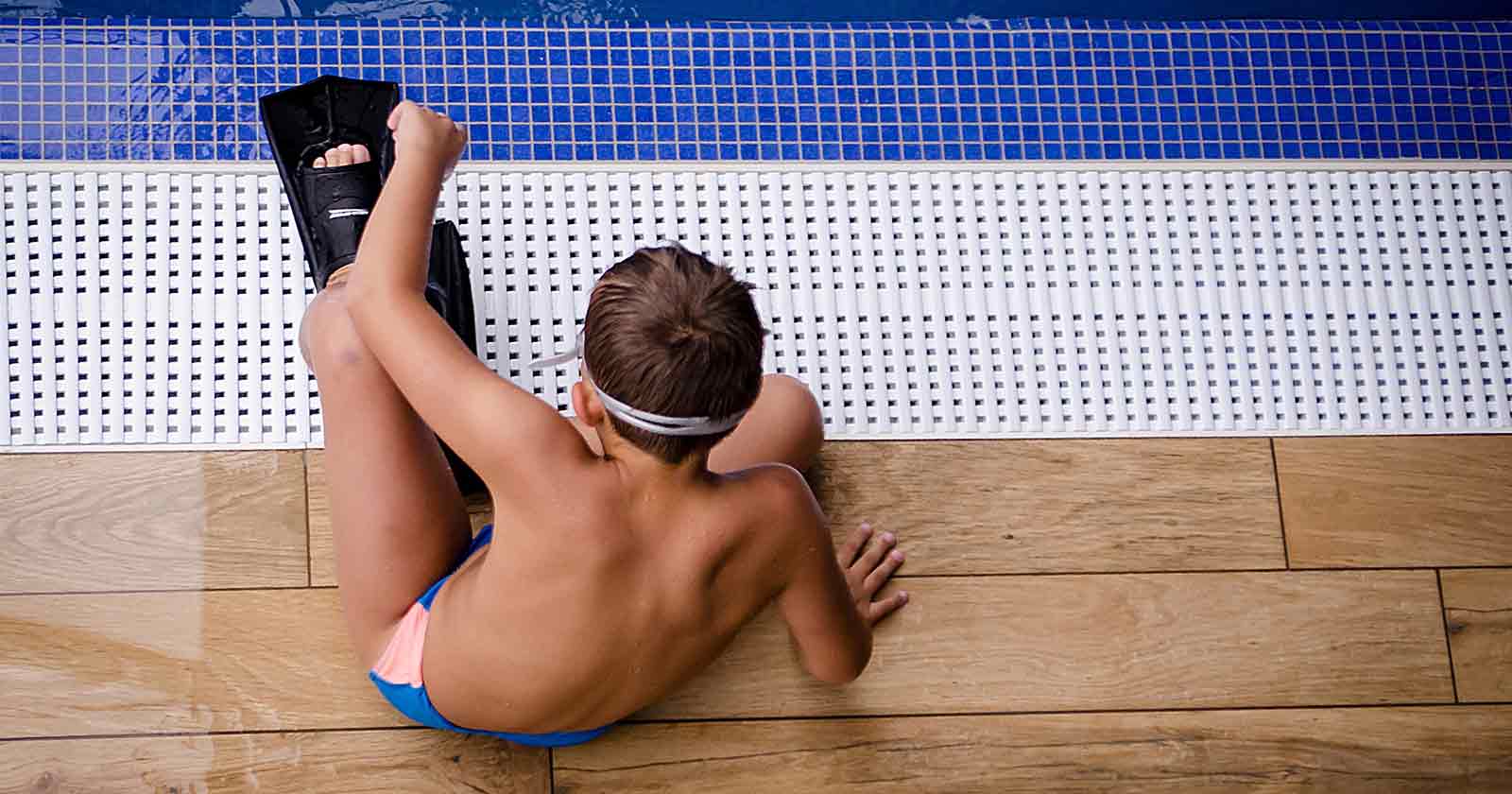
If you have kids swimming in the pool, the answer to whether or not you need a pool safety refresher course is a resounding, “Yes!” That’s because kids tend to be impulsive. Setting rules and handing out consequences—in case you weren’t aware, a time-out from the pool makes a huge impression—is the best way to promote pool safety.
As with all things when dealing with children and pets, consistency is the key to success. Don’t let unsafe behavior slide. It’s not worth the risk of things getting out of hand or, worse, someone getting hurt.
Pool safety for swimmers
You may decide to actually post a sign near your pool listing your house rules. Make sure it’s in a spot where it’s clearly visible. It can curb the impulsive behavior mentioned above.
Pool rules don’t just apply to kids though. Adults need to adhere to them as well.
The Red Cross suggests that your pool rules include the following:
• No running around the edge of the pool.
• No diving unless you have a designated space for doing so.
• Children may only swim when supervised.
• When supervising children, no distractions, such as cell phones or books, are allowed.
• Swim with a buddy.
• Adults can only swim sober.
• Stay away from drains. The suction can be dangerous.
It’s important that adults are held accountable for breaking the rules too because they need to set a good example for any children in the pool. Again, time-outs work well to reinforce what you expect of people.
Batten down the hatches
When your pool isn’t in use, lock the gate to block access. Water has a very strong appeal to a lot of people and children are curious. So if you don’t have your pool enclosed, you shouldn’t allow your children to play in the yard unsupervised. They may only be planning to dip a finger or toe into the water but accidents happen in a split second—what if they lost their balance and fell in?
Separating your pool from the house and yard with a four-sided barrier of some type—a mesh screen enclosure, perhaps—reduces a child’s risk of drowning by 83%!
Above-ground pools can be secured by locking or removing the steps, ladders, or anything, such as outdoor furniture and toys, that can be used to give children a boost up whenever the pool isn’t in use.
Pool alarms are another popular safety feature. Homeowners install them on doors and windows with direct access to the pool area. And, you might want to check out the Safety Turtle 2.0. This highly rated alarm attaches to your pet’s collar—or your toddler wears it on their wrist. It sets off an alarm in the house when it gets wet.
Better safe than sorry
Taking extra precautions can’t hurt either.
Employing layers of protection, such as always supervising children in the pool and providing life jackets for non-swimmers is an essential part of keeping everyone safe when in the water.
Always keep inexperienced swimmers within an arm’s reach of you. Never rely on water wings, swim rings, inflatable toys, or other water recreation items to replace adult supervision. We repeat—never!
It’s also a good idea to enroll your children in swimming classes. It builds their confidence in their abilities and provides you with peace of mind. After all, having strong, confident swimmers in the family is the best-case scenario for pool owners.
Still, many children who drowned in a home swimming pool weren’t supposed to be in the water at all when it happened. That includes the short—and often chaotic—time period when everyone was to be getting out of the pool and heading indoors. Pay attention!
In case of emergency
If a child is missing, check the pool immediately! Seconds count in preventing death or permanent disability due to a lack of oxygen to the brain.
It’s important for homeowners to take every precaution available for pool safety. Of course, that should include being trained in Cardiopulmonary Resuscitation (CPR).
The American Red Cross provides CPR classes. If you have taken the class, but several years have passed, it’s a good idea to take it again. It reinforces the chances that you spontaneously spring into action in the event of an emergency.
If someone is drowning, the Red Cross suggests following this chain of command to increase the chances of survival:
• Recognize the signs of someone in trouble, they include floundering in the water, going underwater and not coming up, or someone shouting for help.
• Shout for help and rescue or remove the person from the water—without putting yourself in danger.
• Have someone call 9-1-1. If alone, give two minutes of immediate care and then call for help yourself.
• Begin rescue breathing and CPR.
• The Red Cross suggests using an Automated External Defibrillator (AED) if one is available if there isn’t a pulse detected. However, we realize that most homeowners don’t have this device lying around their house. Still, if you can’t detect a pulse, making EMS aware of that fact allows them to spring into action when they arrive.
It won’t be long now
Taking the time to refresh yourself on pool safety is one way to ensure that this summer will be filled with great memories of time spent with those you love.
Having a plan in place should an emergency situation arise and making sure that everyone knows and follows your rules for time spent at the pool before they dive in will provide you with peace of mind.
Summer is on the way! Let’s have a safe one and fill it with memories that last a lifetime!
